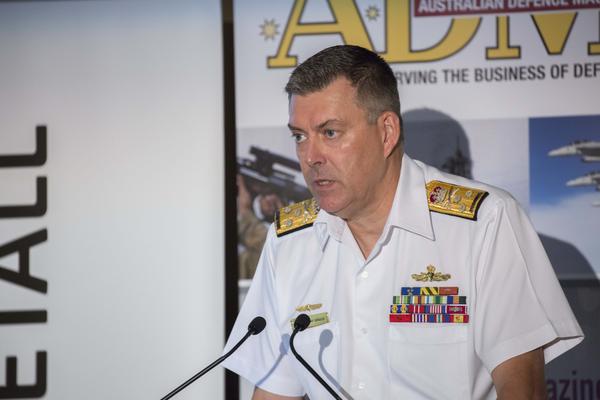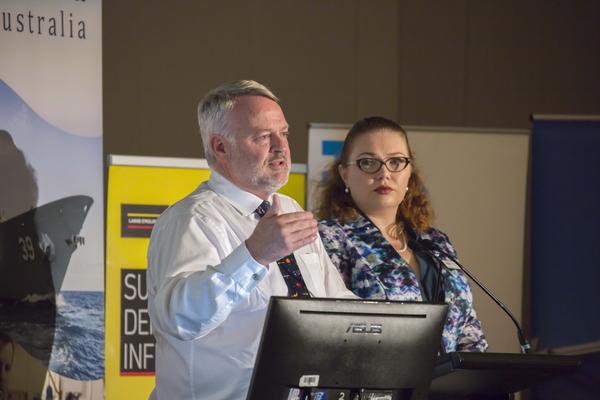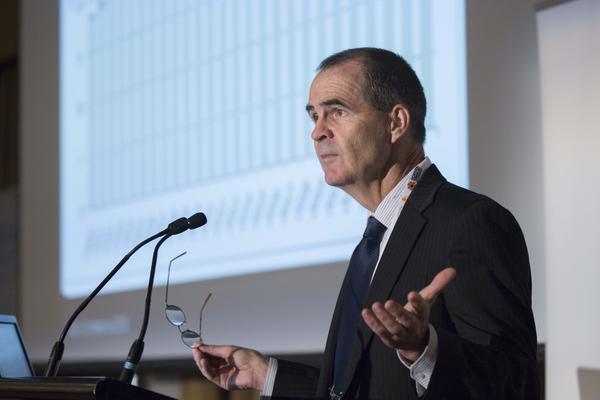Wednesday’s ADM Congress 2018 in Canberra once again fulfilled its brief of providing an annual platform for updates from industry, defence and government.
More than 600 delegates learned first-hand that Australian Joint Strike Fighter related exports have passed $1 billion in value, that communication is improving between Defence and industry and, on the lighter side, that even hotel valet parking staff are keen to drive the Thales Hawkei light protected mobility vehicle.
The Congress saw a packed program of presentations from industry, Defence and government, including Defence Industry Minister Christopher Pyne, CEOs of primes including BAE Systems, Rheinmetall and Navantia, and Chiefs of both the Air Force and Army.
It was a mix of acquisition updates, company technology capability briefs and panels on subjects such as innovation and indigenous Australians in the defence industry. Chief of Army, Lieutenant General Angus Campbell, added some humour in commenting that his temporary “company car” is a Thales Hawkei sporting the number plate “Army 1”, which the Congress venue’s valet parking staff were only too keen to drive.
Look for full coverage of the ADM Congress in the March issue of Australian Defence Magazine, but following are some highlight speaker comments from throughout the event.
Federal Minister for Defence Industry Christopher Pyne, on the F-35 Joint Strike Fighter:
“Australia is beating Japan and South Korea over and over again as the Asia Pacific hub for the maintenance, repair, overhaul and upgrade of the Joint Strike Fighter, whether it’s the engines, the frames, the warehousing and 64 out of 65 of the componentry has already been decided. And what we are proving as Australians and our partners around the world is that we can not only compete, we can beat those countries.”

Vice Admiral Ray Griggs, Vice-Chief of Defence Force on communication with industry:
“Personally, understanding how crucial the reduction of through life costs are to us, how important the minimisation of the number of systems there are, how much inventory we must carry, how many training schools and courses we need and understanding that having a workforce that is portable across our respective fleets is crucial to us. If industry understands those things, that’s a great start.”

Lieutenant General Angus Campbell, Chief of Army, on the Hawkei:
“We’re not thinking of the Hawkei as a vehicle with a digital network shoved in to it. Rather, it is a digital network with a vehicle combat system wrapped around it. And much more of that thinking is required.”

Kim Gillis, Deputy-Secretary – CASG, on working with industry:
“I think historically we have wasted so much time and effort, especially in the tendering phases, where you have seven or eight tenderers; the reality is that there’s only two or three of them that are going to be viable. One of the things in the Smart Buyer assessment and the frankness we need to have with industry is to stop you wasting your time.”
For more on the DepSecs's address see our Defence Week 479 story.

Dr Andrew Davies, Australian Strategic Policy Institute, on the recently announced $3.8 billion defence export strategy:
“I think Australia has been relying on its own defence sector to get out there and sell itself in a world where other countries have a much more unified national approach. It hasn’t been a level playing field. I’m glad they’ve done something about that.”

ADM thanks its conference partner Informa Australia and platinum sponsor Rheinmetall Defence Australia for their support in making the event possible. We would also like to thank Navantia Australia, Bae Systems Australia, Fincantieri, Dassault Systemes and Rolls Royce as well as our many other sponsors. We'll be posting photos from the event on our website galleries page and the event was also live tweeted via @austdefence and #ADMCongress18.





